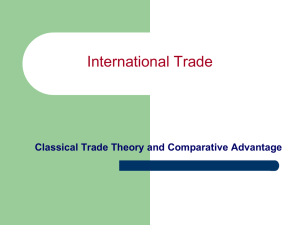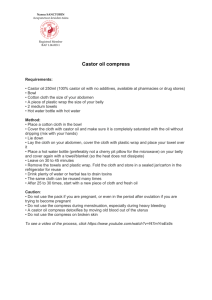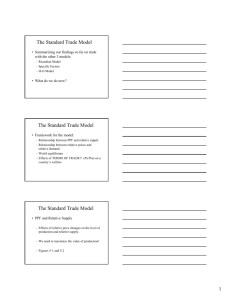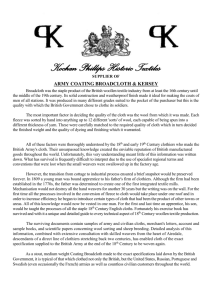COLLEGE OF BUSINESS ADMINISTRATION
advertisement
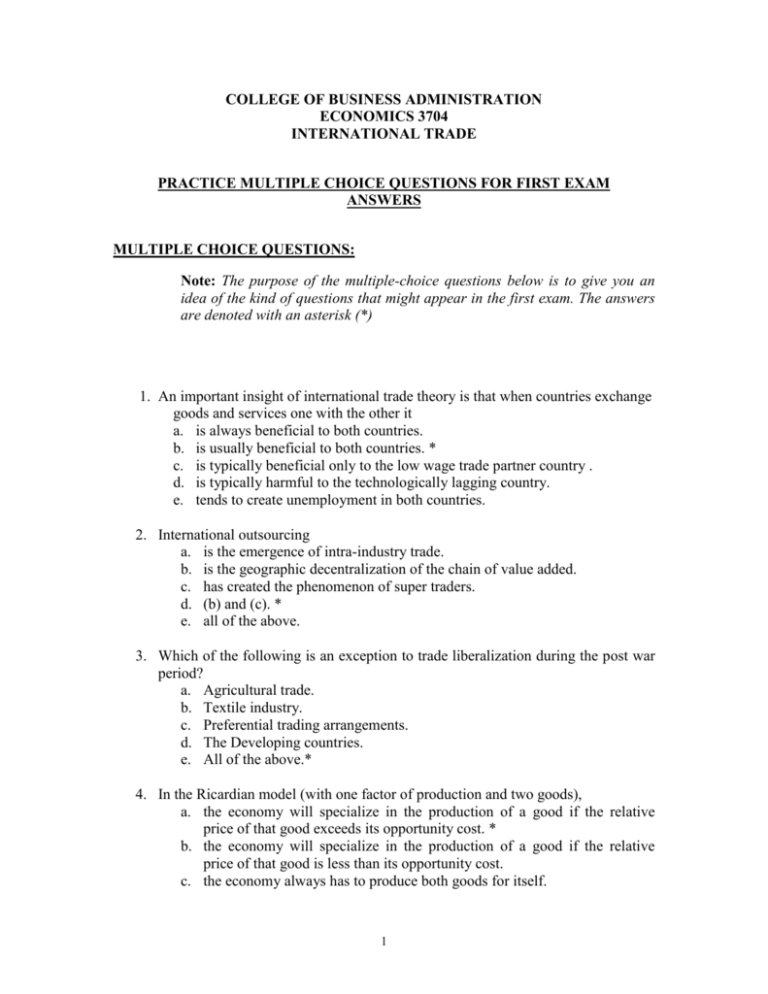
COLLEGE OF BUSINESS ADMINISTRATION ECONOMICS 3704 INTERNATIONAL TRADE PRACTICE MULTIPLE CHOICE QUESTIONS FOR FIRST EXAM ANSWERS MULTIPLE CHOICE QUESTIONS: Note: The purpose of the multiple-choice questions below is to give you an idea of the kind of questions that might appear in the first exam. The answers are denoted with an asterisk (*) 1. An important insight of international trade theory is that when countries exchange goods and services one with the other it a. is always beneficial to both countries. b. is usually beneficial to both countries. * c. is typically beneficial only to the low wage trade partner country . d. is typically harmful to the technologically lagging country. e. tends to create unemployment in both countries. 2. International outsourcing a. is the emergence of intra-industry trade. b. is the geographic decentralization of the chain of value added. c. has created the phenomenon of super traders. d. (b) and (c). * e. all of the above. 3. Which of the following is an exception to trade liberalization during the post war period? a. Agricultural trade. b. Textile industry. c. Preferential trading arrangements. d. The Developing countries. e. All of the above.* 4. In the Ricardian model (with one factor of production and two goods), a. the economy will specialize in the production of a good if the relative price of that good exceeds its opportunity cost. * b. the economy will specialize in the production of a good if the relative price of that good is less than its opportunity cost. c. the economy always has to produce both goods for itself. 1 d. the relative prices of goods are always equal to their relative unit labor requirements. e. (a) and (d). 5. If Chile has a comparative advantage over Argentina in wine relative to beef, then under free trade: a. Chile will specialize in wine production. b. Chile will produce both wine and beef. c. Chile will specialize in beef production. d. Chile will not specialize in beef production. * e. None of the above. Answer the following two questions using the information on unit labor requirements provided in the following table: Home Foreign Butter (labor-hours/lb.) aLB=1/5 a*LB=1 Cloth (labor-hours/yard) aLC=1 a*LC=1/3 6. Which of the following statements is correct? a. Home has an absolute advantage in the production of butter and a comparative advantage in the production of butter, while Foreign has an absolute advantage in the production of cloth and a comparative advantage in the production of cloth.* b. Home has an absolute advantage in the production of cloth and a comparative advantage in the production of butter, while Foreign has an absolute advantage in the production of butter and a comparative advantage in the production of butter. c. Home has an absolute advantage in the production of butter and a comparative advantage in the production of cloth, while Foreign has an absolute advantage in the production of cloth and a comparative advantage in the production of cloth. d. Home has an absolute advantage in the production of butter and an absolute advantage in the production of cloth, while Foreign has a comparative advantage in the production of cloth and a comparative advantage in the production of cloth. e. None of the above. 7. The price of butter in terms of cloth in Home under autarky is: a. b. c. d. e. f. 1 yard of cloth. 1/5 yard of cloth.* 5 yards of cloth. 1/3 libra of butter. 1 libra of butter. 2 8. Intra-industry trade a. depends on differences across countries. b. depends on market size. c. occurs among similar countries. d. (b) and (c).* e. none of the above. 9. Internal economies of scale arise when the cost per unit a. rises as the industry grows larger. b. falls as the industry grows larger. c. rises as the average firm grows larger. d. falls as the average firm grows larger.* e. None of the above. 10. The simultaneous export and import of automobiles by the United States is an example of a. increasing returns to scale. b. imperfect competition. c. intra-industry trade. * d. inter-industry trade. e. None of the above. 11. A monopoly firm engaged in international trade and facing segmented markets at Home and Abroad will a. equate average to local costs. b. equate prices in the two markets. c. equate marginal costs with the highest price the market will bear. d. equate marginal costs with marginal revenues in both domestic and in foreign markets.* e. None of the above. 12. A product is produced in a monopolistically competitive industry with scale economies. If this industry exists in two countries, and these two countries engage in trade one with the other, then we would expect a. the country in which the price of the product is lower will export the product. b. the country with a larger market will export this product. c. each of the countries will export different varieties of the product to the other.* d. neither country will export this product since there is no comparative advantage. e. None of the above. 13. International trade forces domestic firms to become more competitive in terms of a, the introduction of new products. a. product design and quality. 3 b. product reliability. c. product price. d. All of the above.* 14. International trade in goods and services tends to a. increase all domestic costs and prices. b. keep all domestic costs and prices at the same level. c. lessen the amount of competition facing home manufactures. d. increase the amount of competition facing home manufacturers. * e. None of the above. 15. The gravity model offers a logical explanation for the fact that a. Trade between Asia and the U.S. has grown faster than NAFTA trade. b. Trade in services has grown faster than trade in goods. c. Trade in manufactures has grown faster than in agricultural products d. Intra-European Union trade exceeds International Trade of the European Union.* e. None of the above 16. According to the gravity model, a characteristic that tends to affect the probability of trade existing between any two countries is a. their cultural affinity b. the average weight/value of their traded goods c. their colonial—historical ties d. the distance between them* e. the number of varieties produced on the average by their industries. 4




